Your kitchen countertop is more than just a place to prep meals—it sets the tone for the entire space. It also takes up a lot of real estate, with industry guidelines recommending 150 linear inches of counter space. Some designers adhere to the 3×4 rule (three separate counters, at least four feet long each).
With countless materials, styles, and design ideas to choose from, finding the perfect countertop can feel overwhelming. We rounded up 15 kitchen countertop ideas to spark your creativity and help you discover the best look for your space.
Elevated Efficiency
While the standard height for kitchen islands is 42 inches, a multi-level counter can be more functional. One side of your island could be lower for a comfortable, chair-height dining area, while the other side could include a 36-inch-high food prep station, cooktop, and sink. Add a slightly higher level for serving or display.
Multiple tiers can help separate cooking and socializing areas, making your kitchen more user-friendly and engaging. This approach also adds architectural interest to your kitchen design.
Materials Mashup
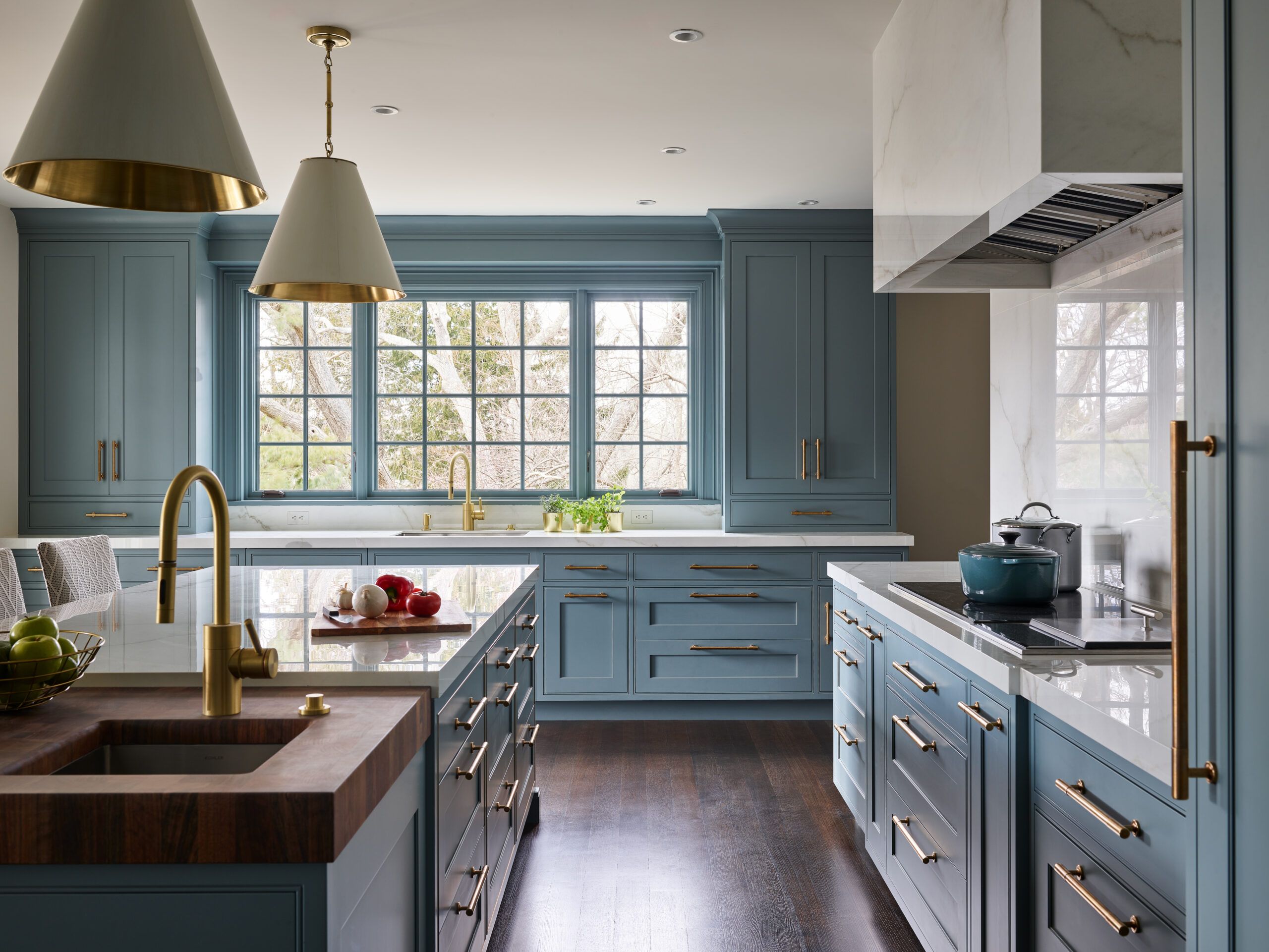
Why limit yourself to a single countertop material when you can create a stunning combination? Mixing materials like warm wood, sleek stainless steel, and elegant marble can result in a uniquely stylish and functional kitchen. The key is balance. Pair eye-catching elements with understated cabinet hardware and flooring to avoid overwhelming the space.
This approach allows you to incorporate high-end materials in smaller quantities for a luxurious look that doesn’t break the bank. Plus, contrasting materials offer tactile variety and define different zones within your workspace.
Stone Savings
If a solid slab of stone is beyond your budget, consider using stone tiles to achieve a similar look at a fraction of the cost. A big expense associated with solid stone countertops comes from professional installation. By opting for a DIY tile job, you could potentially save 10% to 20% of the total project cost.
Using large 12×12-inch tiles simplifies the installation process and results in fewer seams, creating a look that more closely resembles a solid slab. Alternatively, you can mix and match colors for a unique design.
Rent a tile saw with a diamond blade (typically around $60 per day) to cut stone tiles easily. Finish the edges with stone pieces or complementary wood trim for a polished appearance.
Edge Appeal
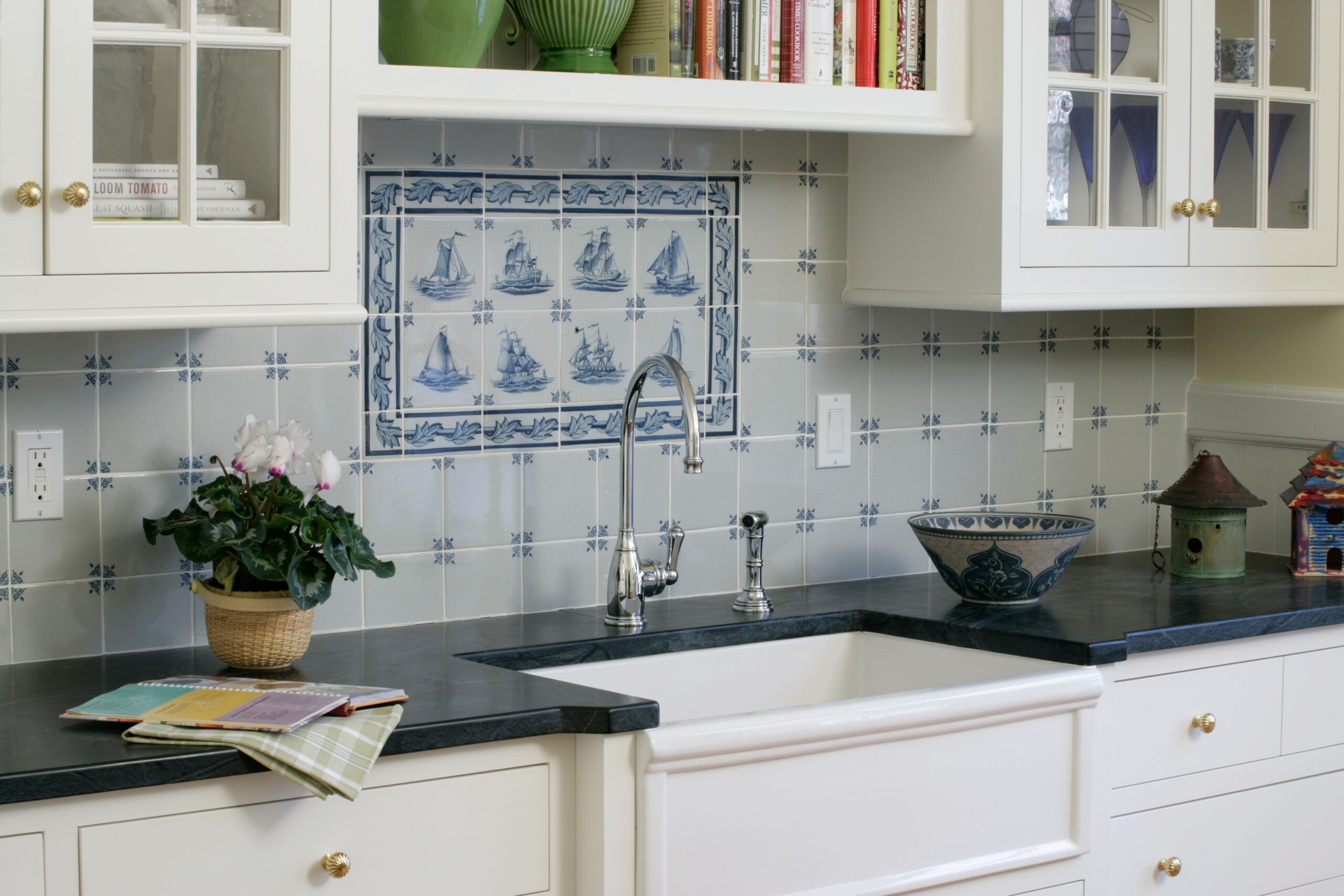
The edge profile of your countertop may seem like a minor detail, but it plays an important role in your kitchen’s overall look and feel. Classic S-shaped ogee edges are common in traditional or transitional kitchens, but they aren’t the only choice. Squared and eased edges create a sleek, modern aesthetic that complements modern kitchens, while rounded or bullnose edges lend a softer and more casual feel.
The right edge profile can enhance your kitchen’s style and durability, so choose one that complements your overall design vision. Consider a raised marine edge on stainless steel countertops for a contemporary twist or a rough-hewn chiseled edge on natural stone for a rustic vibe. Versailles edges, inspired by French Baroque architecture, are an opulent option with two sheer vertical faces joined by a smooth curve.
Seamless Sink
Integrated sinks, fashioned from the same material as the countertop, give your kitchen a seamless and cohesive look in your kitchen. Available in a wide range of materials—from marble and granite to stainless steel and concrete—these sinks can be customized to your preferred size, depth, and shape.
Beyond aesthetics, integrated sinks provide practical benefits. The absence of cracks and seams where a conventional sink meets the countertop makes cleaning easy, as crumbs can be easily swept directly into the bowl. This design also reduces potential areas where mold and bacteria might accumulate, contributing to a more hygienic kitchen environment.
Matte Magic
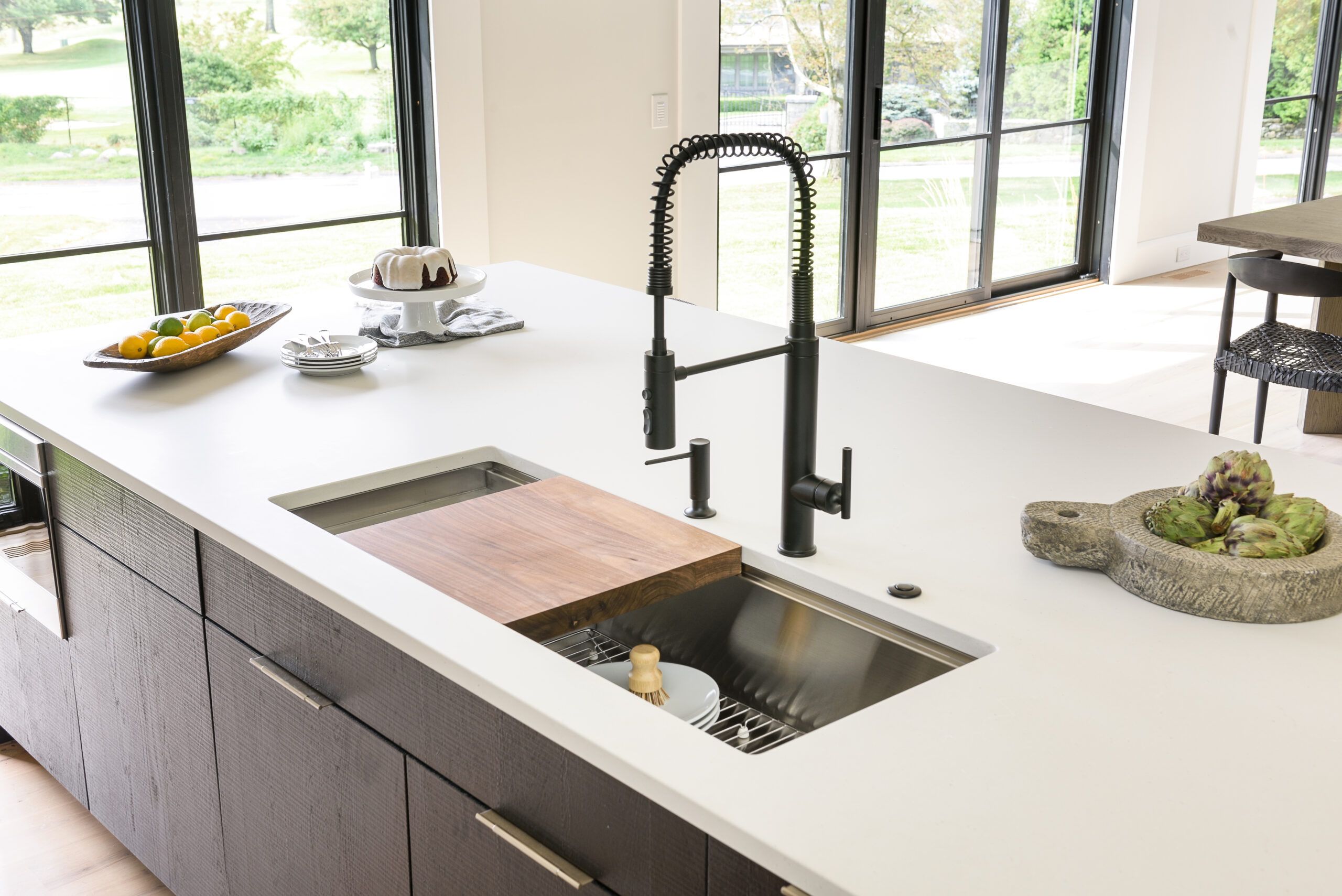
While polished stone countertops have long been popular, a matte finish may be more practical. Though this finish may make stains more noticeable on porous materials like marble, it’s generally better at concealing flaws and scratches. Matte finishes provide a modern aesthetic and are less reflective, reducing glare in well-lit kitchens.
A leather finish is an excellent option for granite lovers. Created using a diamond-tipped brush, this finish imparts a slight gloss that highlights the stone’s natural colors and contours while offering a unique texture.
Copper Charm
Copper countertops offer a warm, old-world beauty that few other materials can match. Beyond its aesthetic appeal, copper boasts natural anti-bacterial properties, making it an excellent choice for kitchen surfaces. The patina that develops over time adds to the countertop’s charm.
While professional installation of copper countertops can be costly, DIY enthusiasts can tackle this project with guidance and support from other homeowners. If you’re looking for an even more unique approach, creating a countertop from a personal penny collection can result in a truly one-of-a-kind surface that combines copper’s benefits with a personalized touch.
Glass Act
Solid glass countertops are gaining popularity for their sleek, modern appearance and practical benefits. Available in a wide range of shapes, thicknesses, textures, edges, and colors, glass countertops offer design versatility. They’re highly durable, able to withstand high temperatures, and resistant to mold, stains, and scratches.
The reflective quality of glass can brighten your kitchen, making it feel larger and more open. Glass countertops are easy to maintain and capable of supporting a surprising amount of weight. However, heavy or sharp objects can cause irreparable damage if dropped on the surface.
Waterfall Wonder
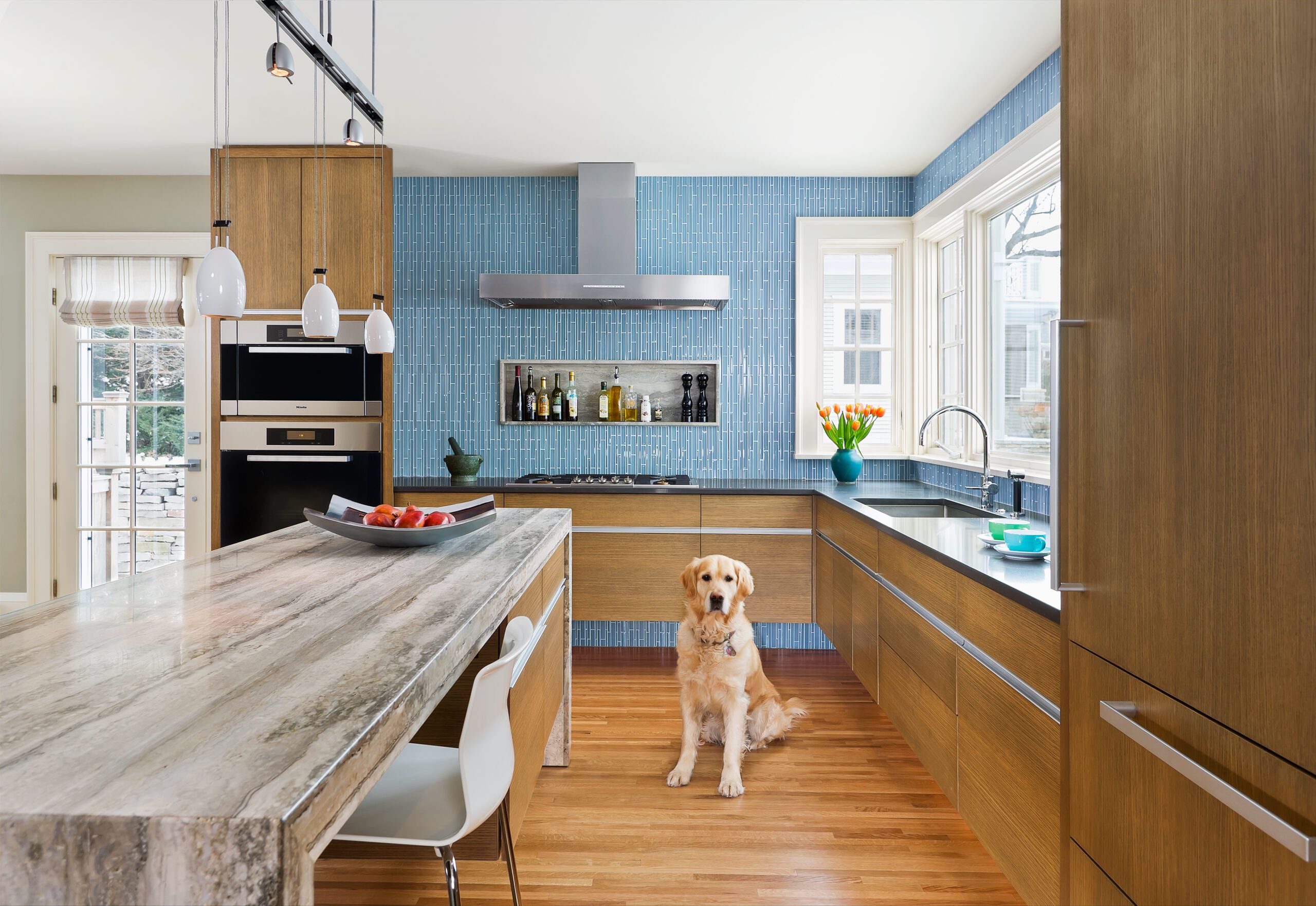
A waterfall countertop, which extends vertically down the sides of cabinets or islands, can turn your kitchen island into a sophisticated centerpiece. While this dramatic design is often associated with high-end materials like granite, marble, or quartz, ambitious DIYers can achieve a similar look using concrete.
To create a waterfall effect, frame existing cabinets with particleboard, fill the seams with wood filler, and apply the concrete like you would spread peanut butter on toast. After the concrete cures, sand to your desired smoothness and seal with polyurethane for a durable, eye-catching finish.
Concrete Customization
Concrete countertops offer more customization options than almost any other materials, including a range of colors, stains, textures, and shapes. With the right tools and a little ambition, you can even create your own concrete countertop.
Start by constructing a mold from melamine particleboard using your current countertop dimensions as a guide. Support the mold with a frame of 2x4s to accommodate the weight of the concrete. Mix and pour the concrete, add any desired textures or inlays, and allow it to dry thoroughly.
Once cured, sand the surface to your desired finish and apply a high-quality sealer. The result is a one-of-a-kind countertop that reflects your personal style and craftsmanship.
Sustainable Surfaces
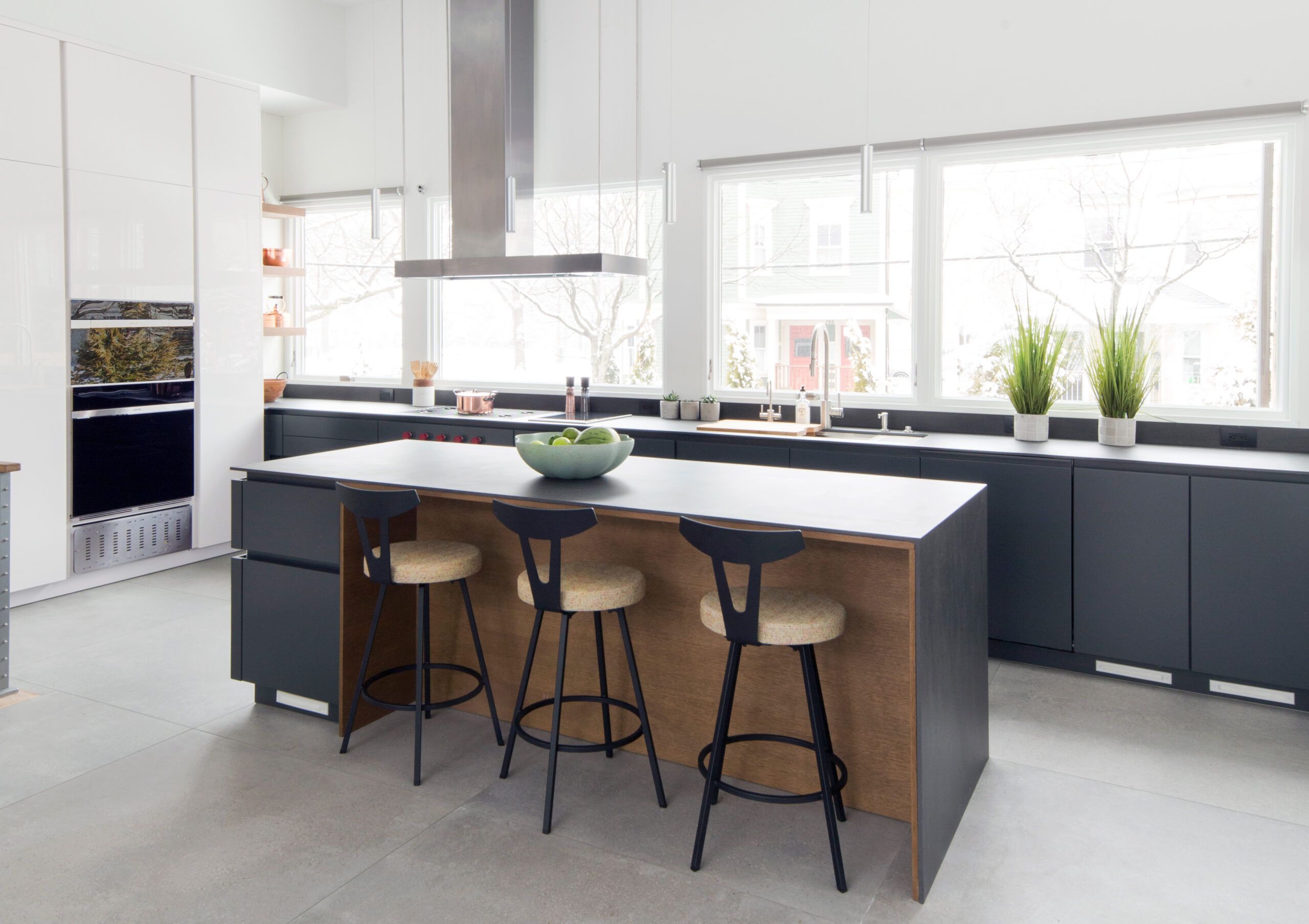
For environmentally conscious homeowners, PaperStone offers a sustainable alternative to traditional countertop materials. It’s made from compressed post-consumer recycled paper, non-petroleum resin, and natural pigments that mimic the warm look and feel of soapstone. Originally developed for skate parks, PaperStone is durable, food-safe, moisture-proof, and bacteria-resistant.
Another green option is a GEOS recycled glass surface, which combines post-consumer and industrial-use glass with a proprietary binder. This non-porous material performs similarly to engineered stone, requires no sealing, and resists stains while providing an eye-catching gem-like appearance.
Salvaged Style
Repurposing salvaged materials for countertops is an eco-friendly and cost-effective option that adds character to your kitchen. For example, old wood doors can be transformed into unique countertops. Using existing laminate countertops as templates, you can cut and shape the doors to fit your space. Add oak veneers to the edges for a finished look, then sand, stain, and seal the surface for durability.
This upcycling approach saves you money and gives new life to materials that might otherwise end up in a landfill. Other salvaged materials, such as reclaimed metal or stone, can find a second life as stylish and sustainable countertops.
Painted Potential
If replacing your countertops isn’t feasible, consider giving them a fresh look with paint. This budget-friendly makeover can transform tired laminate surfaces into glossy, attractive countertops. We recommend using two shades of paint, clear glitter for added sparkle, a poly-acrylic finish (which won’t yellow like polyurethane), and a pour-on sealant.
This DIY approach allows you to customize your countertop color and finish while extending its lifespan. It also offers an opportunity to experiment with different textures and patterns, from marbleized effects to bold, solid colors.
Live-Edge Luxury
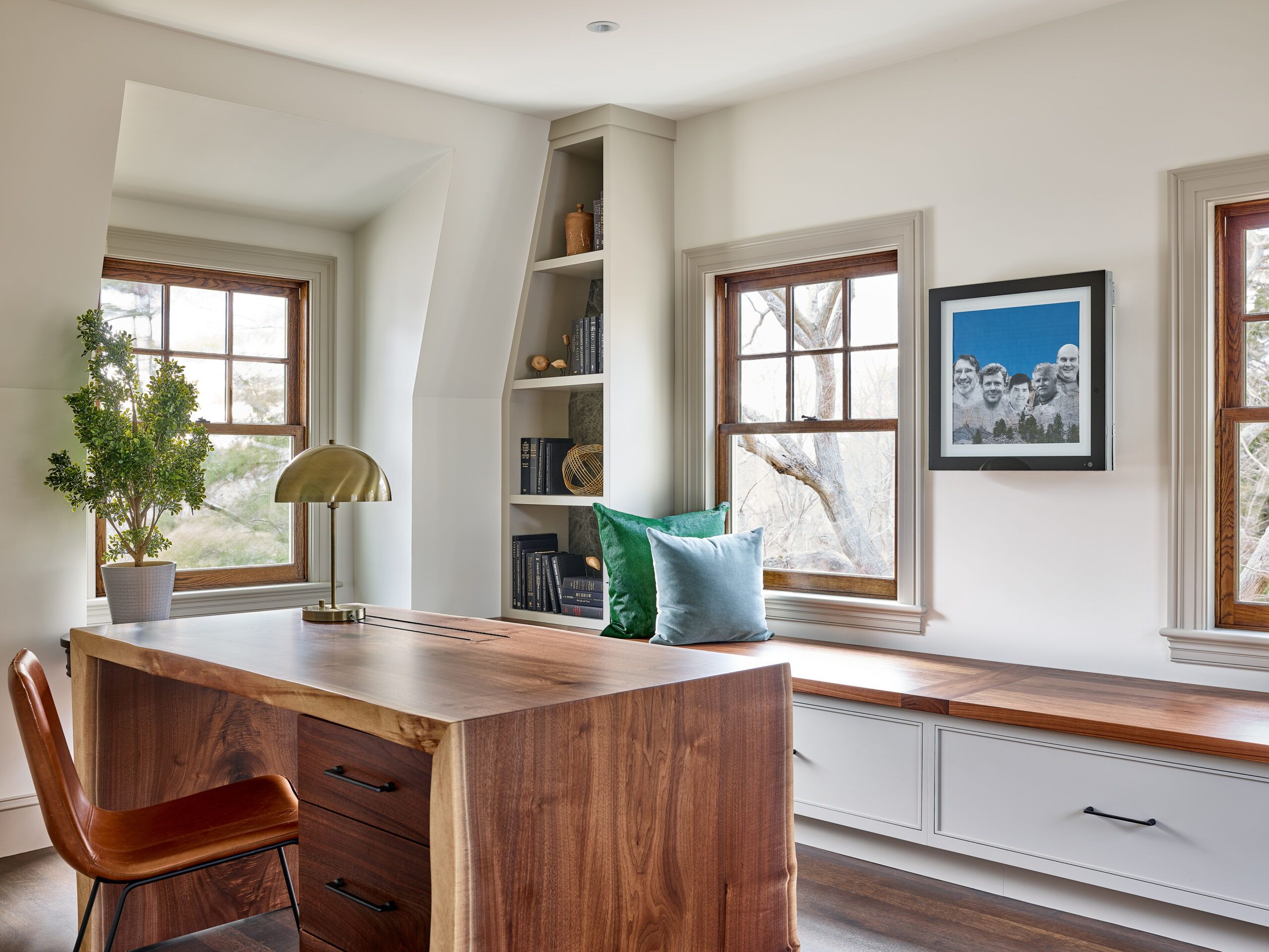
For a touch of natural drama in your kitchen, consider a live-edge countertop. This style preserves the natural contour of the tree, creating a unique, organic look. Live-edge slabs are carefully air-dried, often for years, to prevent cracking, then milled to remove the bark while maintaining the tree’s natural edge.
Available in various wood species such as maple, hickory, walnut, and cherry, live-edge countertops bring a one-of-a-kind element to your kitchen design. Coupled with contrasting cabinetry or minimalist décor, a live-edge countertop can become a stunning focal point that connects your indoor space with the natural world.
Shape Shifting
Break away from traditional rectangular islands by exploring unique shapes for your kitchen countertops. A horseshoe-shaped island with seating along the outside can create an inviting gathering space, while a freeform shape can make the most of an open-plan kitchen.
These unconventional designs can add visual interest, improve traffic flow, and make your kitchen more functional. Customized shapes can provide distinct areas for different tasks, such as baking, chopping, or entertaining guests.
